-
Hi utu,

Originally Posted by
utu

I occasionally store copies of the vfat contents of the USBs on the Windows 7 partition, manipulate the contents among the vfat files with a Win 7 file manger, and subsequently return the USBs to some activity as mounted and active Knoppix installs.
I have read this many times and am still not sure what you are doing so I can't tell if it is safe or scary.
I'll try to sort out the confusion another way.
When you access a file under Linux you are accessing a file on a mounted filesystem. This is true for files on your hard drive, files on a CD or DVD, files on an NFS or CIFS network file system or files on a USB drive or an old style floppy/diskette. It is also true under Windows. The concept of 'disk drive' with a letter corresponds roughly to the mounted filesystem.
On a hard drive you can have more that one partition. Each partition can contain a file system and they don't all have to be the same type of file system.
Suppose my friend lends me a USB hard drive that he says has four partitions on it: a FAT partition, an NTFS partition, a Linux ext3 partition and a Linux swap partition. If I attach the disk to a Linux machine, Linux will see all four partitions and allow me to mount the first three. It won't let me mount the swap partition because there is no file system on it. If I attach the disk to a Windows machine, Windows will see all four partitions but it does not understand the Linux partitions so it will only let me see the VAT and NTFS partitions. I will see two new drives with letters.
The point is the file system is a property of the medium (the disk partition, the USB stick, the DVD) and not the operating system. Where the operating system comes in is that it can only mount file systems it understands. So a FAT file system on a USB stick is always a FAT file system, it doesn't become a vfat file system just because it is plugged into a Linux machine and it certainly does not become an ntfs file system when plugged into a Windows machine.
The file system is inert. One file system cannot corrupt another. Suppose my friend sends me some files on a USB stick but the file system is corrupt. My machine may read garbage where I expect it to read a file. If I copy from the corrupt file system to another file system I won't get a second corrupt file system: I will get a good file containing garbage.
I suppose that if a file system in a partition were damaged so that it looked to be bigger than the partition then writing to it might eventually corrupt the next partition. The only other way I can see a 'corrupt' file system corrupting another is if the corruption is a 'virus' hidden in a file.
So, utu, if you are using a VFAT partition on a USB stick to transfer files from a Linux machine to a Windows machine (or the one machine running both operating systems at different times), then what you are doing is quite safe.
Once upon a time (before the days of the CD), every computer, big and small, had a floppy/diskette drive and every operating system understood the VFAT file system so it was the way to transfer files (I used to send and receive diskette through 'snail-mail' before I had dial-up internet access). The floppy/diskette is gone and we broadband and firewalls and virus scanners so now we use USB sticks to transfer files discretely but VFAT is still the transfer King.
However, VFAT is not a very robust file system. It is easily corrupted. Before you remove a USB stick from a Linux machine, you must unmount it. On a Windows machine you have to 'eject' the USB stick before removing it. If you don't, you risk corrupting the file system.
If you are transferring files, this is not serious as you can just reformat and start again: all you loose is time. However, if you do this to a USB stick with Knoppix on it, you could loose all your persistent data in knoppix-data.img. So back up your USB installation of Knoppix often. (I back mine up daily).
Under Linux your knoppix-data.img. is another file system within a file but if you reboot to Windows, it is just a file and it is quite safe to copy it onto your NTFS hard drive.
-
Senior Member
registered user
@ Forester
Greetings.
My scenario is very simple, and I can probably refine my question to be simpler.
I have a 2G SD Card which acts as a LiveUSB, made from a Knoppix 6.X LiveCD.
I assume its format is vfat, readable by either Linux or Windows.
I have a nice Windows 7 set-up, which has three partitions: one is fat32, with OEM stuff on it for booting, service and diagnostics; two are ntfs: one of these is for Windows 7 and file space; the other is ntfs which stores Win7 system images for system backups (or restores, if you prefer). For the time being, I am the more concerned only with the Win 7 OS and some files I may have there.
If I boot Win7, I can mount the vfat Knoppix USB, save, modify, add-to and delete with no Win7 complaints. My usual instance is for saving and resurrecting knoppix-data.img, thereby shortening the time it takes to re-create a few months of accumulated tweaks. I occasionally save a current copy of the whole of the 2Gb USB files contents on Win7, call this File A. On rare occasions, I bring the similar contents of another 2Gb USB file over to Win7, call this
File B. Working within Win7, using its file manager, I delete knoppix-data.img from File B and restore this with a copy of the knoppix-data.img from File A.
I have done this a few times only, but apparently with no ill effects, at least so far. The ill effect I most fear is screwing up either the OS or the files on Win7.
The file manager operations on my vfat files, I assume, are translated to an ntfs environment, operated upon there using ntfs rules, and the results then re-translated back to the vfat medium.
I am aware of remastering as an alternative, an am not at this time interested in that avenue. I am most interested in getting a sound professional appraisal of the simple process I have outlined.
If it turns out there is a hazard that the vfat product may have some difficulties I haven't anticipated, I can live with that. That might be interesting.
-

Originally Posted by
utu

@ Forester
My scenario is very simple, and I can probably refine my question to be simpler.
Thanks utu for your description. I can't see anything dangerous in what you are doing.
I'm a bit surprised you say you copy the entire contents of the USB onto the hard drive and all you get is a file. I'd expect a folder with a few files and a couple of sub folders.
Anyway, the important thing is you are writing to the ntfs file system using Windows so you aren't running any (more) risks (than the next guy).
If you not remastering then I think you will find the only file that ever changes on the USB's FAT file system is knoppix-data.img so you could probably simplify your procedure further and even save yourself a little time and disk space.
 Posting Permissions
Posting Permissions
- You may not post new threads
- You may not post replies
- You may not post attachments
- You may not edit your posts
-
Forum Rules

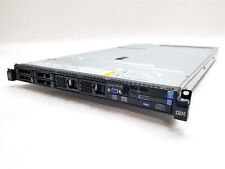
IBM x3550 M4 7042-CR8 6-Bay Server System Intel Xeon E5-2640v2 2.50Ghz 8GB No HD
$419.99

IBM 8203-E4A pSeries 520 6-Bay Server System Power6 2 Core 4.2GHz 4GB No HD
$419.99

IBM Power S822 8284-22A 12SFF Power8 3.89GHz 6Core 64GB RAM No HDD Server System
$359.99
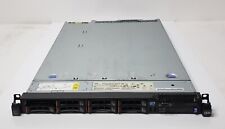
IBM System x3550 M3 Dual Intel Xeon X5650 @2.67GHz 32GB RAM No HDD
$84.50
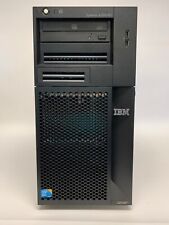
IBM SYSTEM x3200 M2 Server - HDD wiped, No OS
$75.00
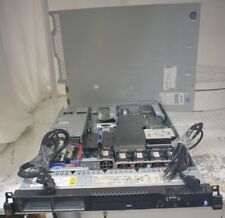
IBM 7944AC1 System x3550 M3 Server 1*Intel Xeon X5650 2.67GHz 4GB SEE NOTES
$26.97

IBM x3550 7042-CR4 Server System Intel Xeon 5130 2.00Ghz DVD-Rom Drive 1GB No HD
$139.99

IBM IntelliStation 9114-275 4-Bay Server Power4+ Core 1.0ghz DVD-Rom 1GB No HDD
$699.99
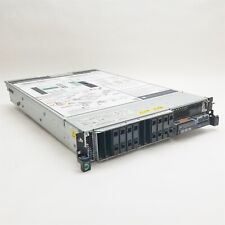
IBM Power S822 8284-22A 12SFF Power8 3.89GHz 6-Core 64GB RAM No Bezel/HDD Server
$319.99

IBM Power S822 12-Bay Server System Power8 Core 3.42Ghz DVD-Rom Drive 64GB No HD
$349.99




 Reply With Quote
Reply With Quote










